Disclosure: This article contains affiliate links. We may earn a commission from purchases at no extra cost to you, which helps our travel content.
The first time I stood within the crystalline embrace of a Vatnajökull ice cave, I realized no photograph could truly capture the transcendent blue light filtering through ancient ice. Yet as artists, we must try. After five winters chasing these ephemeral formations near Höfn, Iceland's southeastern harbor town, I've developed a profound relationship with these glacial cathedrals. They transform continuously—what exists today may collapse or melt tomorrow, making each visit a privilege and each photograph a preservation of something fleeting. This guide distills my experiences navigating Iceland's winter landscape, where the boundaries between art and nature dissolve like mist against glacial walls. Whether you're a seasoned photographer seeking to capture something extraordinary or a traveler with a camera phone and an appreciative eye, Höfn's surrounding glaciers offer some of Earth's most surreal landscapes—if you know when and how to find them.
Understanding Iceland's Ice Caves: Nature's Fleeting Masterpieces
Before we delve into technical advice, it's essential to understand what we're photographing. Ice caves aren't permanent fixtures—they're seasonal phenomena born from glacial meltwater carving tunnels through the ice during summer months. When winter arrives and temperatures plummet, these tunnels stabilize temporarily, creating the caves photographers chase.
The region surrounding Höfn sits beneath Europe's largest glacier, Vatnajökull, which covers about 8% of Iceland. This massive ice cap produces some of the world's most spectacular ice caves, with the Crystal Cave and Anaconda Ice Cave being among the most renowned. Each cave possesses its own personality—some intimate spaces where you can hear the glacier's heartbeat in dripping water, others vast chambers with cathedral-like proportions.
During my second winter in Iceland, I learned this lesson dramatically when a cave I'd photographed extensively the previous year had completely vanished. A local guide explained that a minor earthquake had shifted the glacier enough to collapse the structure. Nature had reclaimed her artwork. This impermanence is precisely what makes photographing these spaces so compelling—you're capturing something that exists in this form only briefly, perhaps for a single season.
The blues you'll encounter defy description—from pale aquamarine to deep sapphire—all created by the compression of ice over centuries, eliminating air bubbles and allowing light to penetrate deeply. This compressed ice absorbs all colors of the spectrum except blue, which reflects back to create the otherworldly azure glow these caves are famous for.
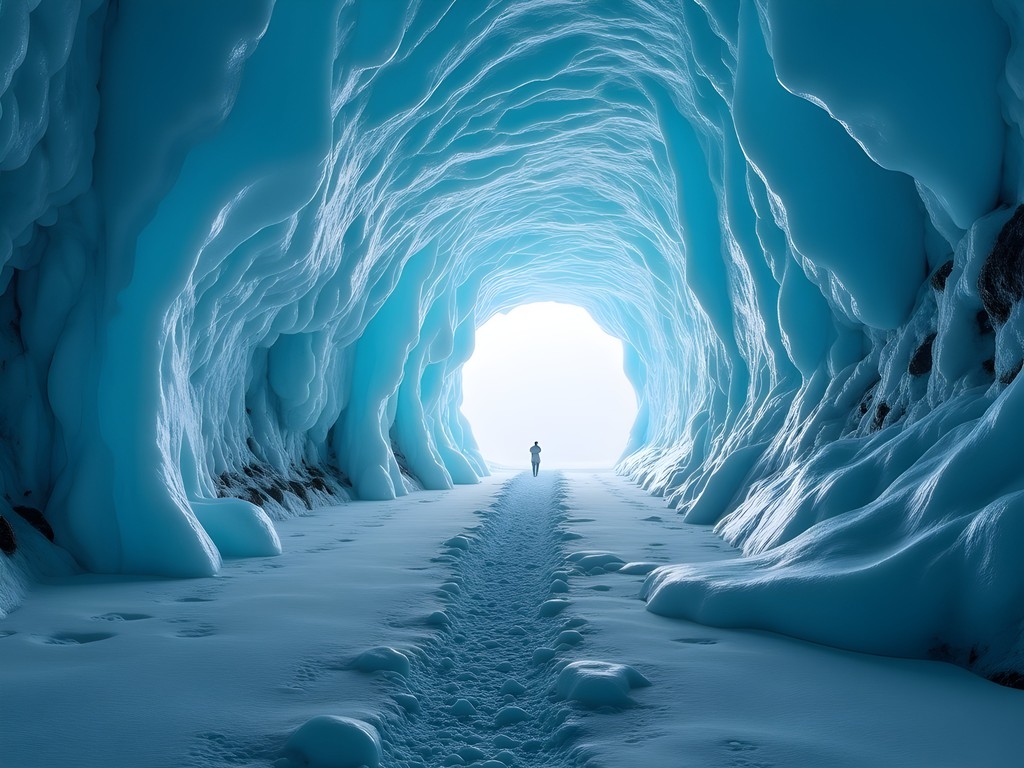
💡 Pro Tips
- Research which caves are accessible before your trip as they change seasonally
- Follow Icelandic meteorological websites to understand glacial conditions
- Connect with local photographers on Instagram for real-time cave updates
Essential Photography Gear for Ice Cave Expeditions
The extreme conditions of Icelandic winter demand thoughtful preparation, both for your safety and your equipment's functionality. After forgetting spare batteries on my first excursion (a rookie mistake that cut my shooting time in half), I've developed a methodical approach to packing.
First, your camera body. While any modern DSLR or mirrorless camera will work, weather-sealing becomes invaluable when confronting the constant drip of melting ice and potential snow outside the caves. My Sony Alpha A7R IV has proven remarkably resilient through five Icelandic winters, though I still protect it with a rain cover when conditions deteriorate.
Lens selection requires strategic thinking. For ice caves, I primarily rely on three options:
- A wide-angle lens (16-35mm) captures the expansive architecture of larger caves
- A standard zoom (24-70mm) offers versatility for mid-range compositions
- A fast prime lens (35mm f/1.4) excels in the dimmer recesses where light barely penetrates
A robust carbon fiber tripod is non-negotiable. The low light conditions inside caves demand longer exposures, and handheld shooting simply won't deliver the sharpness your images deserve. Choose one with spiked feet that can grip icy surfaces securely.
Beyond camera gear, practical accessories make the difference between misery and productivity:
- Silica gel packets stored with your gear overnight combat condensation
- Multiple batteries (kept in inner pockets close to body heat)
- Microfiber cloths for wiping inevitable water droplets
- A headlamp with red light mode to preserve night vision
- Crampons for your boots to prevent slipping on icy surfaces
Remember that electronics drain quickly in cold temperatures. My solution is a high-capacity power bank kept insulated in an inner pocket, ready to revive depleted batteries between shooting locations.
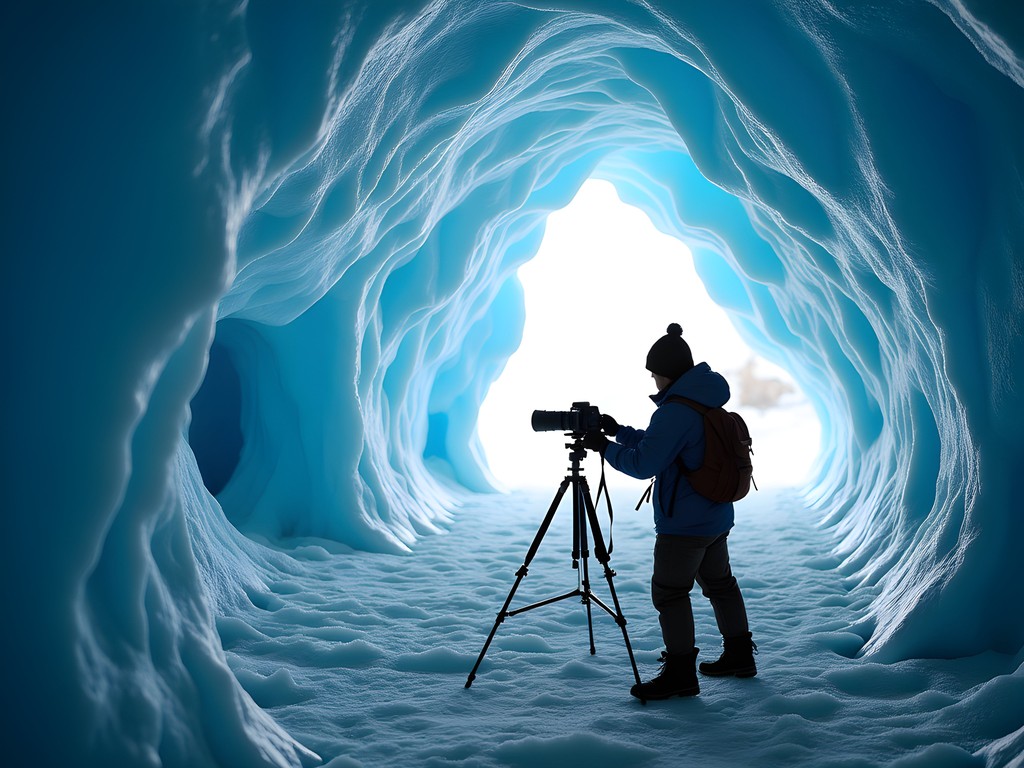
💡 Pro Tips
- Keep spare batteries in pockets close to your body to preserve their charge
- Bring silica gel packets to combat condensation when moving between temperature extremes
- Pack lens cloths in waterproof containers to keep them dry for cleaning water droplets
Accessing Höfn's Ice Caves Safely
Let me be absolutely clear: never attempt to visit ice caves without an experienced local guide. This isn't merely cautious advice—it's potentially life-saving wisdom. Glaciers are dynamic entities, constantly shifting, cracking, and occasionally collapsing without warning. During my third visit to Iceland, I witnessed a partial ceiling collapse in a cave just hours after tourists had been photographing there. The force was enough to shatter ice that had formed over centuries.
Höfn makes an excellent base for ice cave expeditions. This charming harbor town offers comfortable accommodation options ranging from guesthouses to boutique hotels. I typically stay at guesthouses where local guides often gather in the evenings, sharing intelligence about current cave conditions over traditional Icelandic meals.
From Höfn, several reputable tour operators run specialized photography excursions to the ice caves. The advantage of photography-focused tours is timing—they often visit caves during optimal light conditions and allow longer stops than standard tourist groups. Expect to pay between 20,000-30,000 ISK (roughly $150-220 USD) for a specialized photography tour. While not inexpensive, the expertise and safety equipment provided justify the cost.
The journey to the caves themselves typically involves:
- A drive from Höfn to the glacier access point (1-2 hours)
- A super jeep or specialized vehicle ride across rough terrain
- A moderate hike across the glacier surface wearing crampons
The physical demands aren't extreme, but you should be comfortable walking on uneven surfaces while carrying your gear. Most tours provide crampons, helmets, and other necessary safety equipment, but confirm this when booking.
One final note on access: timing is everything. The prime season for ice cave exploration runs from November through March, with January and February offering the most stable cave conditions. However, weather remains the ultimate arbiter—tours can be canceled with little notice if conditions deteriorate, so build flexibility into your itinerary.
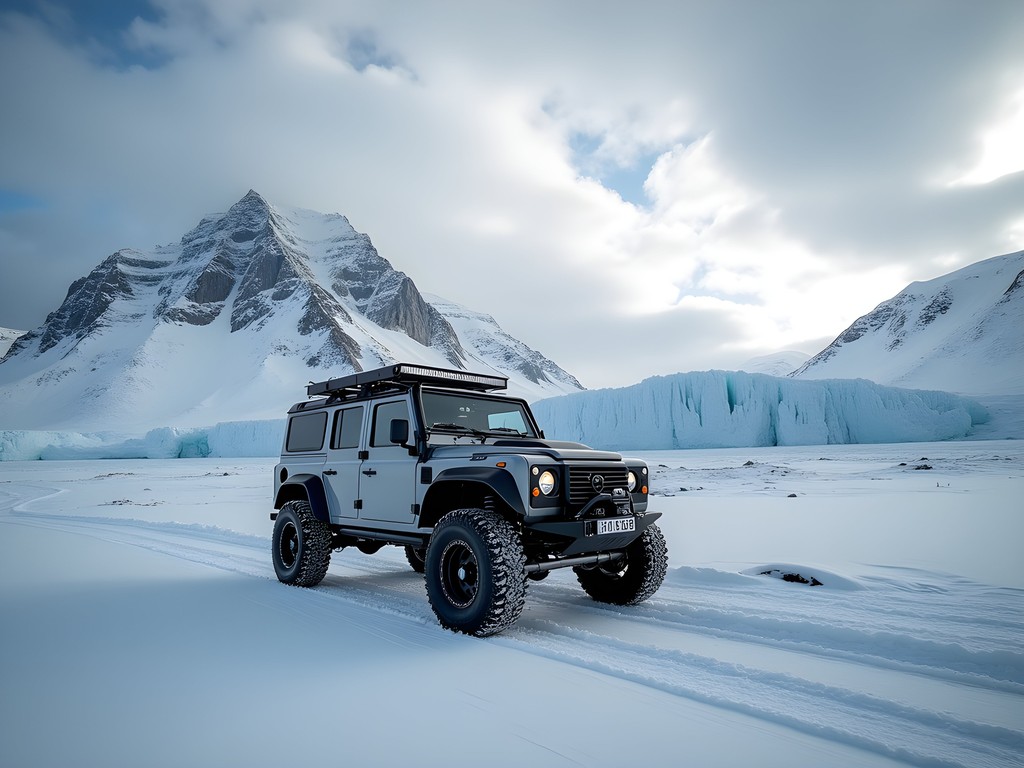
💡 Pro Tips
- Book tours at least 3-4 months in advance during peak winter season
- Choose photography-specific tours that allow adequate time at each location
- Pack microspikes or crampons for your own boots if you have specific comfort preferences
Mastering Ice Cave Photography Techniques
Inside these crystalline cathedrals, conventional photography rules require adaptation. The unique lighting conditions—that ethereal blue glow filtering through translucent ice—presents both extraordinary opportunities and technical challenges.
Working with the Blue Light
The signature blue of ice caves requires careful white balance consideration. Auto white balance often attempts to neutralize the blue, robbing your images of their magical quality. Instead, manually set your white balance between 6000K-7000K to preserve the natural blue while preventing it from becoming artificially intense. I often bracket my white balance settings, giving myself options in post-processing.
Exposure becomes a delicate balancing act. The dynamic range inside caves can be extreme—brilliant highlights where sunlight penetrates ice directly alongside deep shadows in recesses. This is where shooting in RAW format becomes essential, providing the latitude to recover details in post-processing. I typically underexpose slightly (by about 2/3 stop) to preserve highlight details in the translucent ice, then recover shadow details later.
Composition Strategies
When composing ice cave images, consider these approaches:
-
Include a human element for scale – The otherworldly nature of ice caves often makes their dimensions difficult to comprehend. Including a person (ideally in colorful clothing that contrasts with the blue ice) instantly communicates scale.
-
Look for leading lines – Ice formations naturally create stunning linear elements that can draw viewers through your frame. The sinuous curves of cave walls or the striated patterns within the ice itself offer natural compositional elements.
-
Capture details and grand vistas – While wide shots showcase the cave's grandeur, don't neglect intimate details—air bubbles suspended in ancient ice, crystalline formations catching light, or the abstract patterns where water has sculpted ice surfaces.
Technical Settings
For most ice cave photography, I recommend:
- Aperture: f/8 to f/11 for maximum depth of field
- ISO: As low as possible (100-400) when using a tripod
- Shutter speed: Variable depending on available light (often 1/15 to several seconds)
Focus stacking can be valuable in larger caves where depth of field becomes challenging. Taking multiple images focused at different distances and blending them in post-processing ensures sharpness throughout your composition.
For those serious about landscape photography, I've found my filter system invaluable for managing the extreme contrasts in ice caves. A graduated neutral density filter can help balance exposure between bright ice ceilings and darker cave floors.
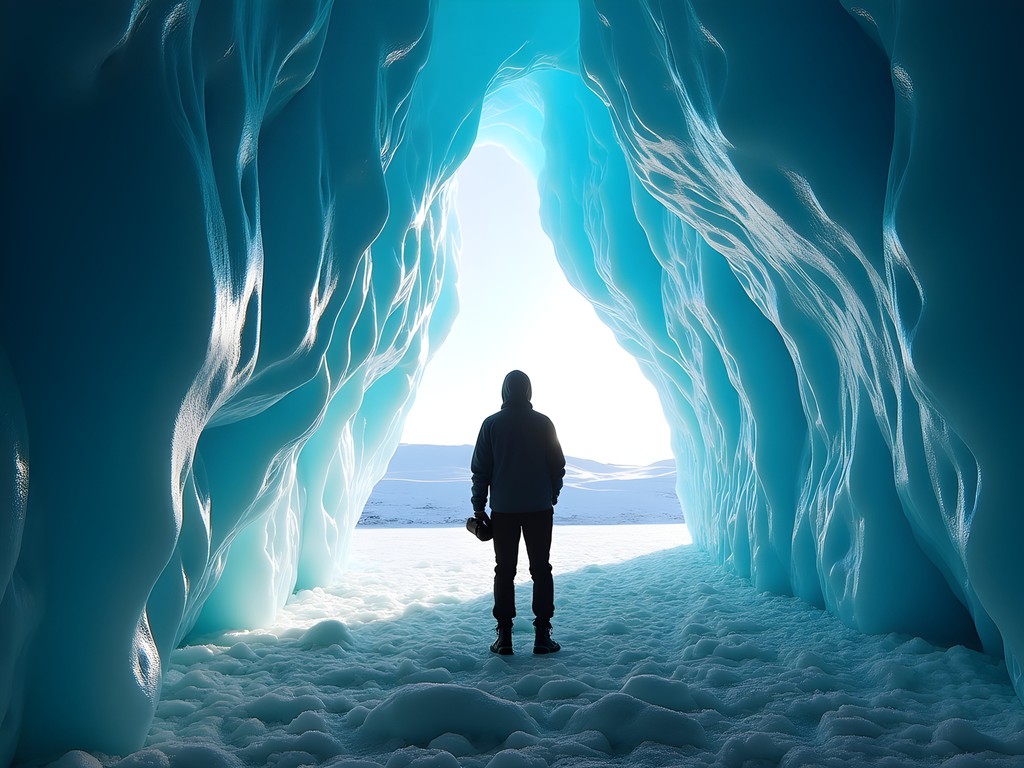
💡 Pro Tips
- Bracket your exposures to ensure you capture all details in both highlights and shadows
- Include a colorful subject (person in red jacket) to provide scale and contrast against the blue ice
- Experiment with light painting using headlamps for creative effects in darker cave sections
Beyond the Caves: Höfn's Other Photographic Treasures
While ice caves rightfully command attention, limiting your photography to them alone would be a disservice to Höfn's diverse landscape portfolio. I've developed a ritual of balancing cave expeditions with these complementary photographic opportunities.
Jökulsárlón Glacier Lagoon & Diamond Beach
Just 80km west of Höfn lies Jökulsárlón, a glacial lagoon where massive icebergs calve from Breiðamerkurjökull glacier and drift slowly toward the Atlantic Ocean. The interplay of light on these floating ice sculptures creates endless compositional possibilities. Visit at sunrise or sunset when low-angle light ignites the ice with golden hues that contrast magnificently with the lagoon's deep blue waters.
Across the road from Jökulsárlón, Diamond Beach presents nature's sculpture gallery—ice fragments washed ashore and polished by waves until they resemble giant diamonds scattered across black volcanic sand. Morning light often produces the most magical conditions, with backlit ice glowing against the dark beach.
Stokksnes Peninsula & Vestrahorn Mountain
Just 15km east of Höfn stands one of Iceland's most photogenic mountains. Vestrahorn rises dramatically from black sand beaches, its jagged peaks creating a fantasy landscape straight from Norse mythology. The foreground of rippled black sand and swaying beach grass offers compelling compositional elements that lead the eye toward the mountain.
This location demands patience and multiple visits. I've photographed here perhaps twenty times across different seasons, and each visit reveals new moods as changing weather systems interact with the mountain. For the most dramatic images, visit during winter storms when clouds swirl around the peaks. Just be prepared for punishing wind conditions—my weather-resistant camera backpack has proven its worth repeatedly in horizontal sleet and sand-laden gales.
Aurora Borealis
Finally, no photographic expedition to Iceland is complete without hunting the Northern Lights. Höfn's relatively dark surroundings make it an excellent base for aurora photography between September and April. The key is monitoring aurora forecasts (the Icelandic Met Office website provides reliable predictions) and being prepared to venture out at a moment's notice when conditions align.
For compelling aurora compositions, scout locations during daylight hours. Identify interesting foreground elements—perhaps a mountain silhouette, reflective water body, or abandoned structure—that will anchor your composition when the lights appear. Remember that auroras require long exposures (typically 5-20 seconds depending on their intensity), so stability is paramount.
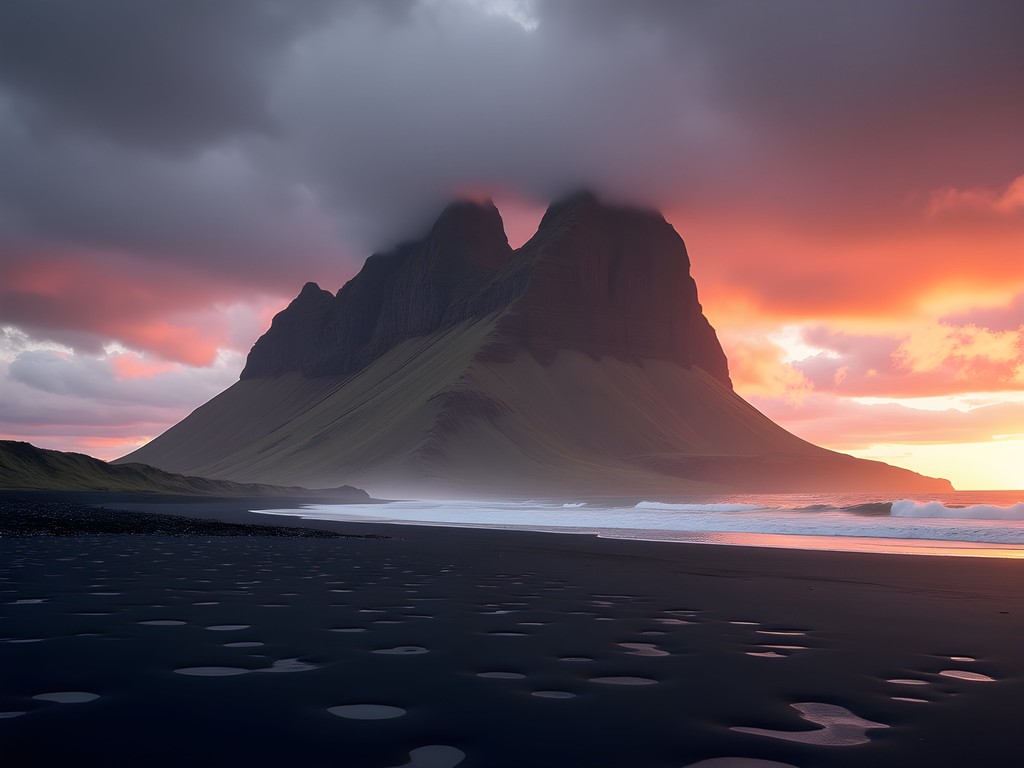
💡 Pro Tips
- Visit Diamond Beach at low tide when fresh ice gems are most abundant
- For Vestrahorn, check tide tables to capture reflections in wet sand during low tide
- Download an aurora alert app that will notify you when activity increases
Final Thoughts
As I pack away my gear after another Icelandic expedition, I'm reminded that photographing Höfn's ice caves isn't merely about technical execution—it's about documenting fleeting moments in Earth's ongoing sculpture. These caves will never be exactly the same again; the images we create become artifacts of geological moments. Perhaps that's what draws me back winter after winter—the knowledge that I'm not just taking photographs, but preserving ephemeral art forms that nature creates and reclaims in the same breath. If you make this journey, approach it with equal measures of technical preparation and reverent wonder. Plan meticulously, but leave room for the spontaneous moments when light and ice conspire to create something unexpected. Above all, remember that beyond the photographs, the experience of standing within these ancient, luminous chambers changes something fundamental in how we perceive our relationship with the natural world. The caves of Vatnajökull aren't just photographic subjects—they're teachers of impermanence, beauty, and our own precious brevity against geological time.
✨ Key Takeaways
- Always prioritize safety with professional guides when exploring ice caves
- Prepare your photography gear for extreme conditions with backup batteries and weather protection
- Preserve the natural blue coloration by carefully setting your white balance
- Include human elements in compositions to convey the massive scale of ice formations
- Extend your photographic journey beyond caves to Jökulsárlón, Vestrahorn, and aurora opportunities
📋 Practical Information
Best Time to Visit
November through March, with January-February offering most stable cave conditions
Budget Estimate
$2,000-$3,000 for one week including accommodation, tours, and car rental
Recommended Duration
5-7 days
Difficulty Level
Intermediate

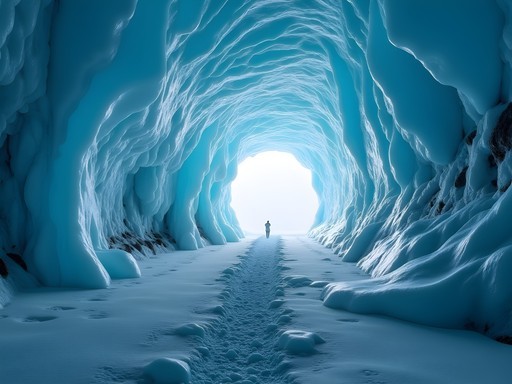


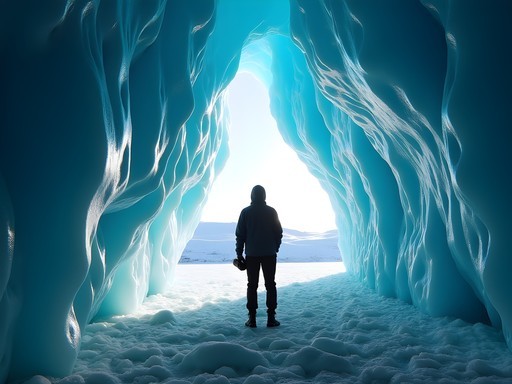




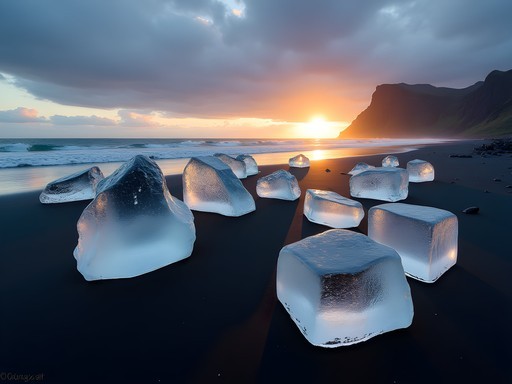
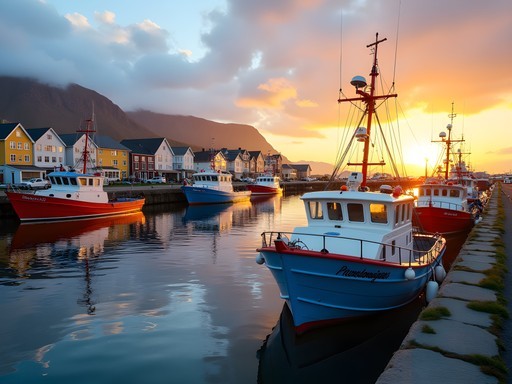


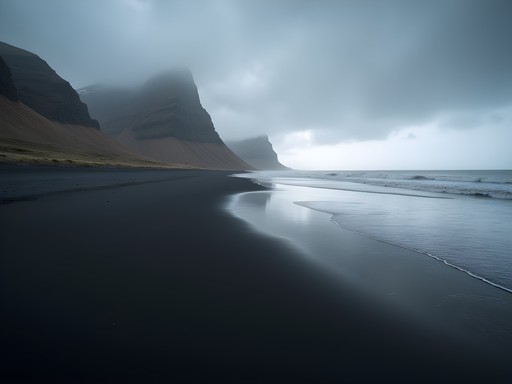


Comments
wildexplorer
Those blue ice colors are absolutely unreal! Your photos make me want to book a flight to Iceland right now.
roamzone
Same! I can't get over how the light plays through the ice. Nature's light show!
wildfan255
Going to Iceland in January - is that a good time for the ice caves near Höfn? Any tour companies you specifically recommend? I'm bringing a basic DSLR but I'm no pro photographer.
Amit Sanchez
January is perfect! The caves are fully formed by then. I recommend Local Guide of Vatnajökull or Ice Guide - both are excellent and safety-focused. For your DSLR, just bring a sturdy tripod and remote shutter release. The guides will help position you for great shots!
wildfan255
Thanks so much! Will check out those companies. Super excited!
Jean Wells
Having photographed ice caves across Iceland, Greenland, and Antarctica, I found your technical breakdown particularly insightful. The challenge of balancing exposure in these environments cannot be overstated. For those serious about ice cave photography, I'd recommend investing in a tripod as the stability is crucial for those longer exposures that capture the depth of blue. I've also found that a good polarizing filter makes a significant difference in managing reflections off wet ice surfaces. Your point about respecting these ephemeral formations is particularly important - with climate change, many of these caves won't exist in the coming decades.
Amit Sanchez
Jean, you're absolutely right about the polarizing filter - it's essential gear I should have emphasized more. And yes, the temporal nature of these formations makes documenting them all the more important. Thanks for sharing your expertise!
skyvibes
Bucket list destination right here! Those blues are insane!
Jean Wells
I visited these caves last winter and can confirm everything Amit says about safety. The guides from Höfn were exceptionally knowledgeable about changing conditions. One cave we planned to visit had become unstable overnight, and they immediately rerouted us to an equally spectacular but safer location. For photographers, I'd emphasize the importance of condensation management when moving between the frigid caves and your warm vehicle. I kept my gear in sealed bags during transitions and let it acclimate slowly to prevent fogging. My camera rain cover also proved invaluable when ice was dripping from the ceiling in one particularly active cave. Excellent guide, Amit!
wildfan255
Good point about condensation! I ruined a lens that way in Norway once. Never again!
Jean Wells
It's a painful lesson to learn the hard way! Silica gel packets are your friends in Iceland.
greenpro6873
These ice cave photos are absolutely stunning! The blue tones are unreal. Did you need special lighting equipment to capture those colors or is it natural?
Amit Sanchez
Thanks! The blue is mostly natural - that's the magic of glacier ice. I did use a tripod for longer exposures, but the color comes from how the dense ice absorbs all colors except blue. No filters needed!
greenpro6873
That's incredible! Nature doing all the work. Makes me want to visit even more now.
summerguide744
Just incredible! Those blue colors don't even look real! 😍
summerlover
Planning a trip for January - are local guides absolutely necessary or can you explore some areas independently?
Amit Sanchez
Absolutely hire a local guide - ice caves can collapse without warning and conditions change rapidly. The guides know which caves are safe and how to access them. It's not worth the risk going solo!
summerlover
Thanks for the honest advice! Safety first - I'll book with a reputable guide.
smartgal
Beautiful photos! Added to my bucket list immediately.
Amit Sullivan
Amit, your piece brings back vivid memories of my own journey through Vatnajökull last winter. There's something almost spiritual about standing inside those ancient ice formations, isn't there? I found that shooting in RAW and underexposing slightly helped preserve the delicate blue tones that make these caves so magical. Did you have any issues with condensation on your gear when moving between the frigid caves and your warmer vehicle? I learned the hard way to bring extra silica packets and to transition my equipment slowly!
Amit Sanchez
Thanks Amit! You're absolutely right about the condensation issues - I keep my gear in sealed bags during the transition and let it adjust gradually. The RAW underexposure tip is spot on too. Those blue tones are so delicate and easy to blow out!
Venture X
Premium card with 2X miles, $300 travel credit, Priority Pass